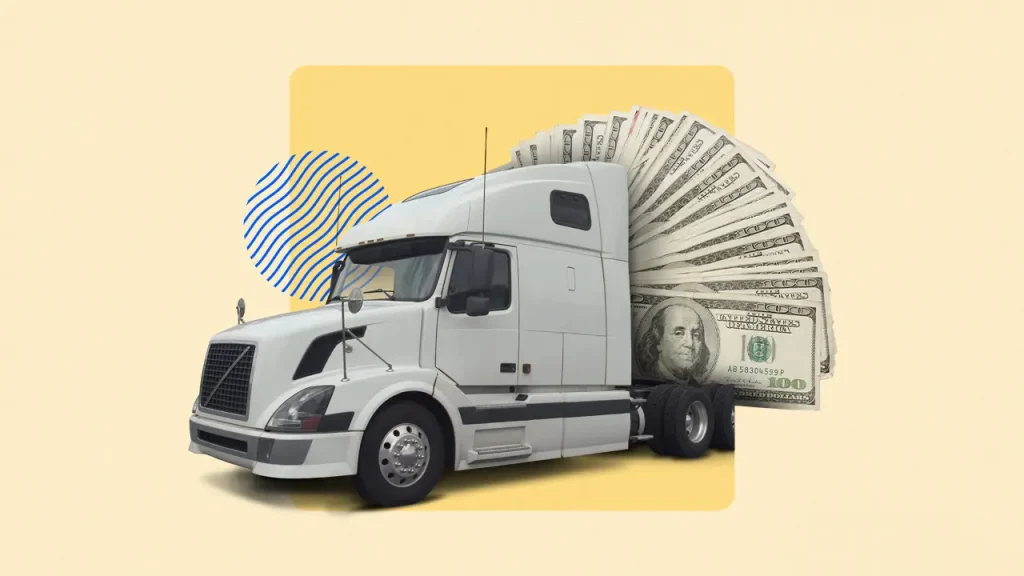For many entrepreneurs in the Philippines, a commercial truck is not just a vehicle; it is a moving asset that serves as the backbone of their business operations. Whether it’s a 10-wheeler hauling goods from the port, a delivery van servicing local stores, or a specialized vehicle for construction, a commercial truck represents a significant capital investment. While a cash purchase is ideal, it is not always a viable option for a growing business that needs to preserve its working capital. This is where financing comes into play. However, securing a loan for a commercial truck is fundamentally different from a personal auto loan. It requires a strategic approach, a clear understanding of your options, and meticulous preparation. This comprehensive guide will explore the best loan options available for financing a commercial truck, detailing the key factors lenders consider, and providing a step-by-step roadmap to a successful loan application.
The Commercial Truck Loan Landscape in the Philippines
The Philippine financial market offers several avenues for businesses and individuals to finance a commercial vehicle. The best option for you will depend on your business structure, financial health, and the type of truck you intend to purchase.
1. Secured Commercial Vehicle Loans
This is the most common and straightforward option for financing a commercial truck. Offered by major banks and financial institutions, a secured commercial vehicle loan is specifically designed for the purchase of a new or surplus truck. The key characteristic of this loan is that the truck itself serves as collateral. In the event of a default, the bank has the right to repossess the vehicle to recover the outstanding debt. This is why the terms are often more favorable than those of an unsecured loan.
How it Works: The borrower makes a down payment (typically 20% to 30% of the purchase price), and the bank finances the remaining amount. The loan is paid in equal monthly installments over a fixed term, which can range from one to five years depending on the type and age of the truck. Banks like Security Bank and BPI offer dedicated “Business Auto Loans” or “Truck Loans” that cater to this market. The loan amount, down payment, and loan term can vary based on the truck’s brand, model, and whether it is brand new or a surplus unit.
Pros:
- Lower Interest Rates: Because the loan is secured by a tangible asset, banks view it as less risky, allowing them to offer lower interest rates compared to unsecured business loans.
- Defined Purpose: The loan’s purpose is clear, which can streamline the application process and make it easier for the bank to assess the risk.
- Competitive Terms: Banks often have competitive loan packages, especially for brand new trucks, that include favorable interest rates and longer loan terms.
2. General Business Loans for Vehicle Acquisition
Some businesses may opt to finance a commercial truck using a general-purpose business loan or a revolving credit line. This option is particularly useful for businesses that need to acquire multiple assets at once, or for those who prefer to keep their cash flow flexible.
How it Works: Instead of a loan specifically for the truck, the business secures a lump sum or a line of credit from a bank. The loan is often secured by other business assets, such as real estate or inventory, allowing the business to use the funds to purchase the truck without the truck being the direct collateral.
Pros:
- Flexibility: The loan proceeds can be used for more than just the truck. For example, a business can use a portion of the loan for the truck and the rest for working capital or other business expenses.
- Scalability: A revolving credit line can be an excellent way to finance a fleet of trucks over time, as the business can draw down funds as new vehicles are acquired, without having to re-apply for a new loan each time.
- Strategic Financing: This approach allows a business to integrate its vehicle acquisition strategy into its overall financial planning.
Cons:
- Higher Interest Rates: General business loans often carry higher interest rates than secured commercial vehicle loans, as they are not tied to the specific value of the truck.
- More Complex Requirements: The application process may require a more extensive review of the business’s overall financial health and its broader assets.
3. In-House Financing vs. Bank Financing
This is a critical distinction that business owners must understand. In-house financing is offered directly by the commercial truck dealership. Bank financing is a loan from an external financial institution.
In-House Financing:
- Pros: It is often more convenient and faster. The dealership handles all the paperwork, and approval times are usually shorter. They may also offer more lenient terms for businesses with a less-than-perfect credit history.
- Cons: The interest rates are almost always higher than a bank loan. The loan terms may be less flexible, and the total cost of the truck can be significantly higher in the long run.
Bank Financing:
- Pros: Lower interest rates, more flexible terms, and a wider range of products. A loan from a reputable bank can also help build a strong credit history for the business.
- Cons: The application process can be more rigorous and time-consuming. It may require more extensive documentation and a more thorough financial assessment.
For a strategic business, bank financing is almost always the more cost-effective option in the long run, provided the business meets the strict eligibility criteria.
The Key Factors Lenders Consider: The “Four C’s” of Commercial Lending
When you apply for a commercial truck loan, banks will evaluate your application using a set of criteria designed to assess your ability and willingness to repay the debt. This evaluation is often based on the “Four C’s” of credit: Character, Capacity, Capital, and Collateral.
1. Character: Your Business’s Reputation and Credit History
Lenders want to know that you are a reliable and trustworthy borrower. They will assess your business’s credit history by checking for any past missed payments, defaults, or bankruptcies. A good credit score, whether from the Credit Information Corporation (CIC) or the bank’s own internal scoring, is a major factor in loan approval and in determining the interest rate. Lenders also look at the character of the business owners and key management. They want to see a history of integrity and responsible financial management.
2. Capacity: Your Business’s Ability to Repay
This is the most crucial factor. Lenders will thoroughly analyze your business’s financial statements to determine its capacity to generate enough income to cover the monthly loan payments. They will look at:
- Cash Flow: A positive and stable cash flow is essential. Lenders will examine your business’s bank statements for the last 6 to 12 months to see how money moves in and out of your accounts.
- Profitability: They will review your Audited Financial Statements and Income Tax Returns (ITR) to ensure that your business is profitable and not operating at a loss.
- Debt-to-Income Ratio: The bank will assess your business’s current debt obligations against its income to ensure that taking on a new loan will not overextend your finances.
3. Capital: Your Investment in the Business
Lenders want to see that you have a significant personal stake in the business. Your own capital investment demonstrates your commitment to the business and shows that you are not solely reliant on borrowed funds. This is why down payments are a non-negotiable part of any secured loan. The higher your down payment, the lower the bank’s risk, which can lead to better loan terms for you.
4. Collateral: The Asset as Security
For a secured commercial truck loan, the truck itself serves as the collateral. Lenders will appraise the value of the truck and determine the loan-to-value (LTV) ratio, which is the amount of the loan compared to the vehicle’s value. In the Philippines, the LTV for a commercial truck is typically between 70% and 80% for brand new units. Lenders may also require a personal guarantee from the business owner, which means you are personally responsible for repaying the loan if the business cannot.
A Step-by-Step Guide to the Application Process
Navigating the application process for a commercial truck loan can be daunting, but with a strategic approach and meticulous preparation, you can increase your chances of success.
Step 1: Pre-Application and Document Gathering
Before you even approach a bank, you must prepare all the necessary documents. This is the most crucial step as it will determine the efficiency of your application.
Required Documents for Corporations or Partnerships:
- SEC Registration and Articles of Incorporation/Partnership
- Latest General Information Sheet (GIS)
- Board Resolution or Secretary’s Certificate
- Business Permit and valid government IDs of the company signatories
- Audited Financial Statements (last 2-3 years)
- Income Tax Returns (ITR)
- Bank Statements (last 6-12 months)
- Business profile and list of major clients/suppliers
Required Documents for Sole Proprietorships:
- DTI Business Registration Certificate
- Valid government IDs
- Latest Audited Financial Statements and ITR
- Bank Statements (last 6-12 months)
Step 2: Compare Loan Options and Negotiate
Do not settle for the first offer. Approach at least two to three different banks and compare their loan terms, including interest rates, processing fees, down payment requirements, and loan terms. Use a loan calculator to determine the total cost of the loan and compare monthly amortizations. You may also be able to negotiate for better terms based on your business’s strong financial standing.
Step 3: Application Submission and Underwriting
Once you have chosen your preferred lender, submit your complete application and all the required documents. The bank will then begin its underwriting process, which involves:
- Document Verification: The bank will verify the authenticity of all your submitted documents.
- Credit Investigation: The bank will conduct a thorough credit check on your business and on you as the business owner.
- Property Appraisal: An independent appraiser will be sent to inspect the commercial truck to verify its value, especially if it is a surplus unit.
Step 4: Loan Approval and Disbursement
If your application is approved, the bank will send you a final loan offer. After you accept the terms and sign the loan documents, the funds will be disbursed. In most cases, the loan amount will be paid directly to the truck dealer or seller.
Conclusion
Financing a commercial truck is a strategic investment that requires careful planning and a thorough understanding of the available loan options. By choosing the right type of loan, meticulously preparing your documents, and understanding the key factors that lenders consider, you can navigate the application process with confidence. A well-structured loan can provide your business with the capital it needs to expand its operations, increase its efficiency, and drive its long-term success.













